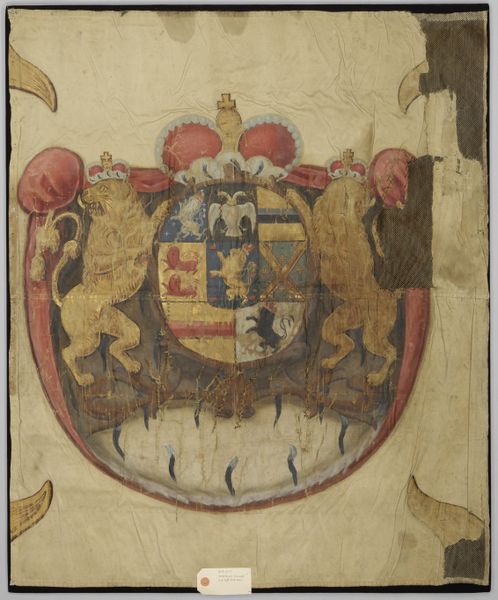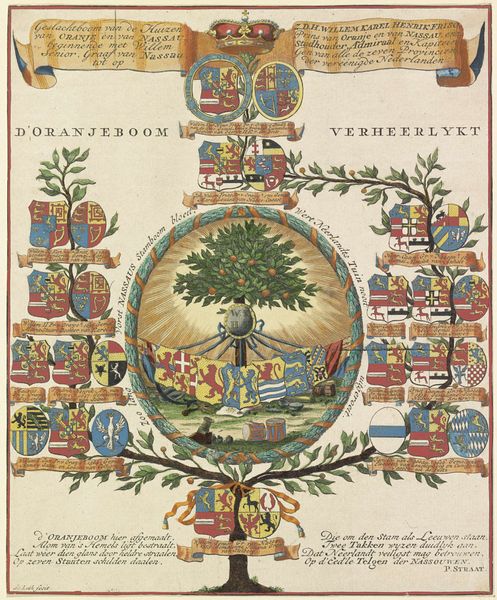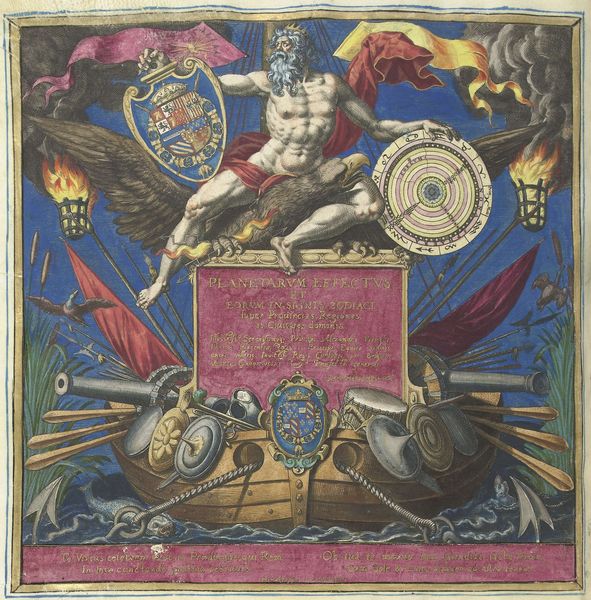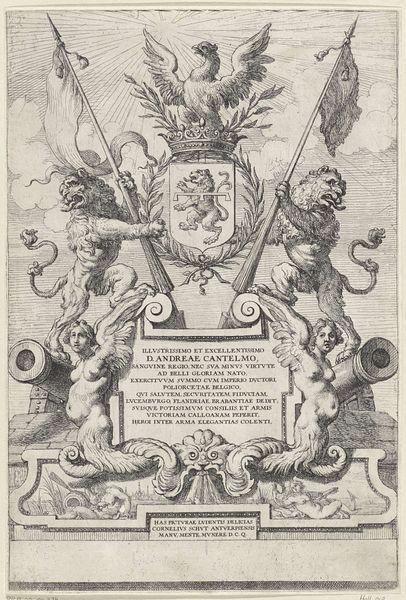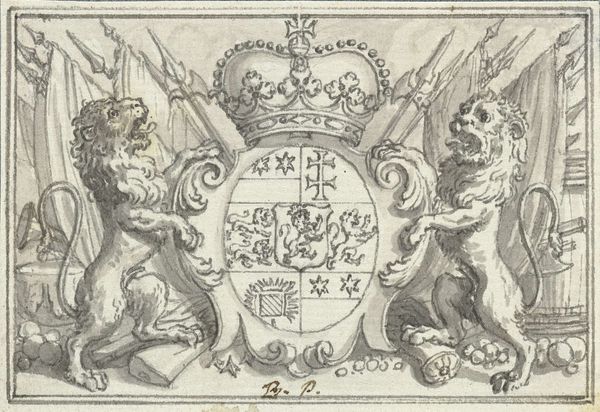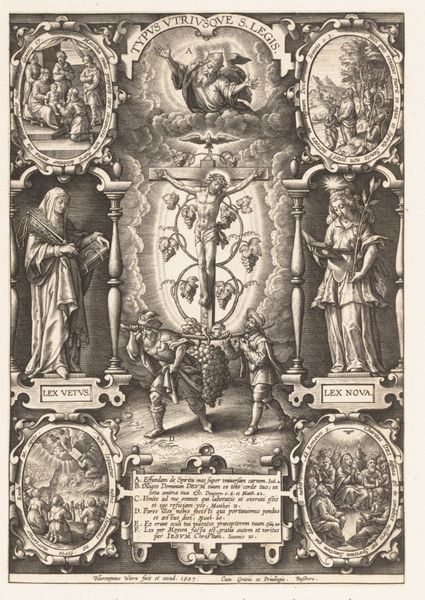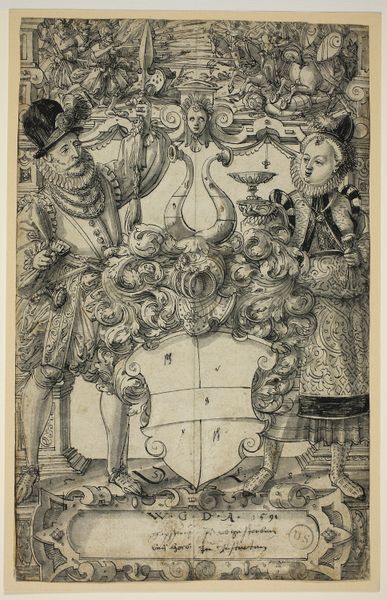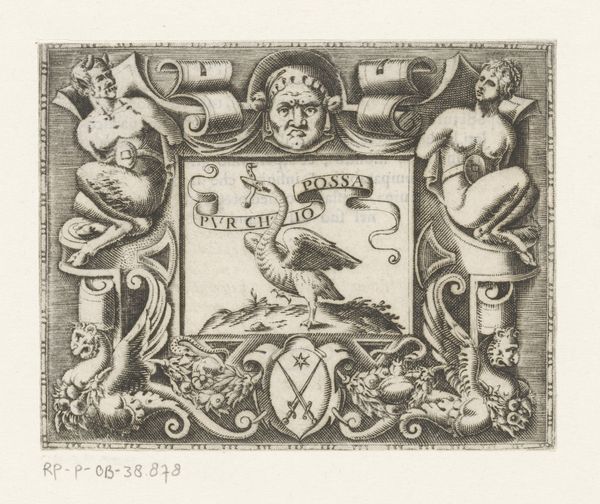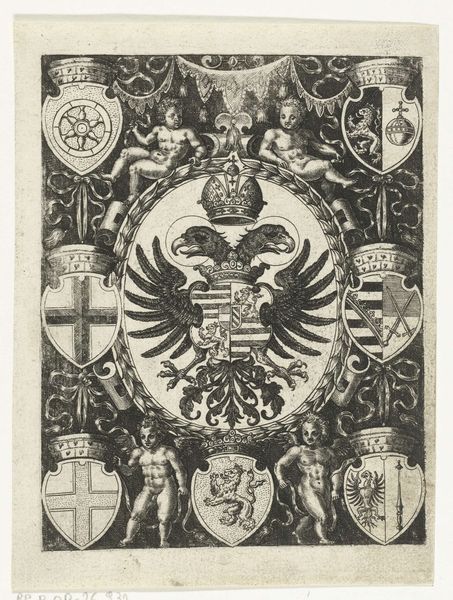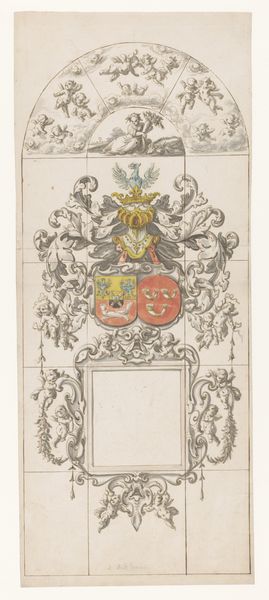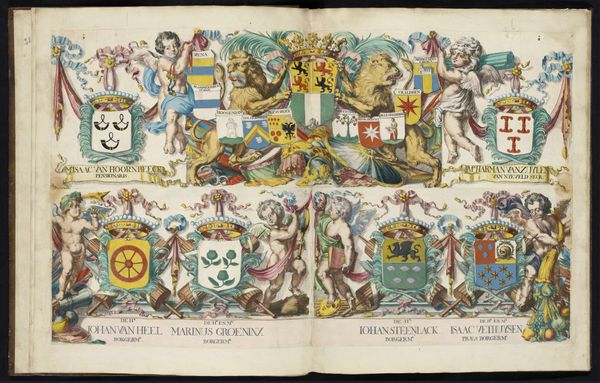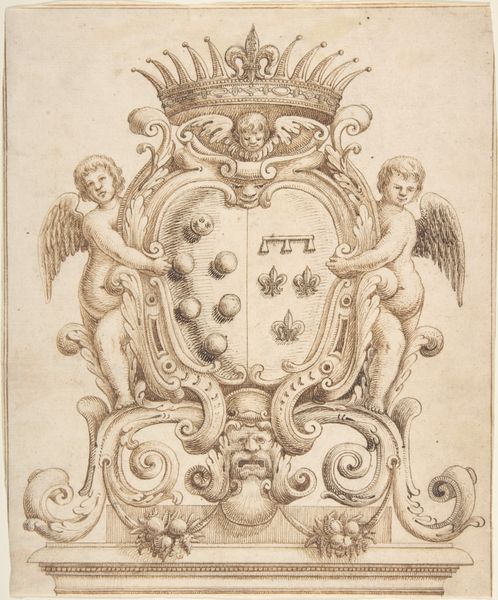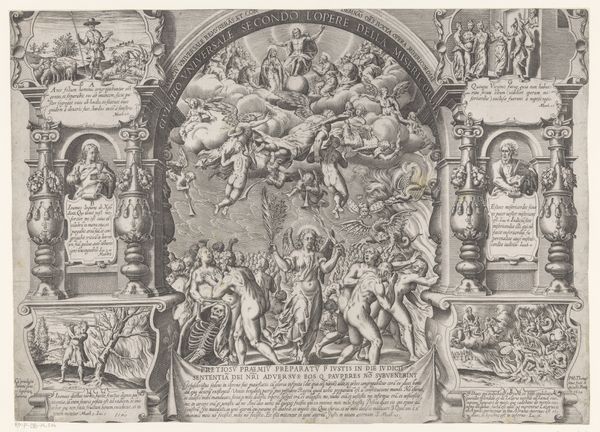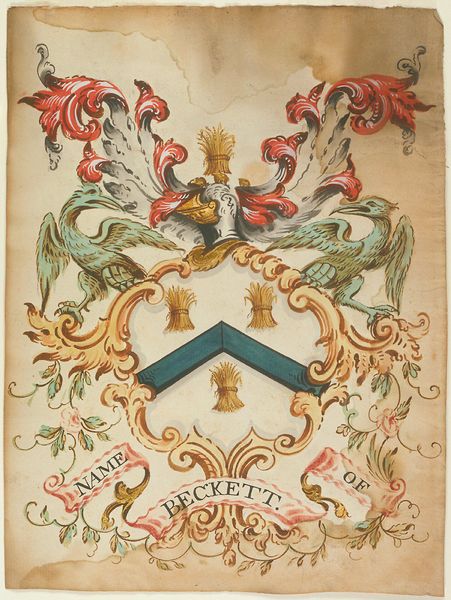
painting, watercolor
#
water colours
#
allegory
#
baroque
#
painting
#
watercolor
#
history-painting
Dimensions: height 422 mm, width 350 mm
Copyright: Rijks Museum: Open Domain
Curator: Looking at this watercolor piece, “Allegorie op de verheffing van Willem IV, 1747," probably made around 1747-1748 by J. Luiscius, I immediately notice the intricate detail. What strikes you most about it? Editor: Well, all the symbolism feels overwhelming! It's visually dense. I’m also struck by the use of watercolor—such a delicate medium for a piece celebrating a political figure. How does the choice of materials and the process behind this work inform its meaning? Curator: That’s a key observation. Watercolor, often associated with delicacy and amateur art, seems almost subversive here. It's being used to depict power and grandeur. Who would be buying and selling art like this, and why choose watercolor? What does that imply about the perceived value of this image, of William IV’s power itself? Editor: So, you're saying that the choice of watercolor could be a comment on the nature of power itself - perhaps highlighting a tension between grand aspirations and perhaps a flimsier reality? The accessibility of the materials perhaps hints at an attempt to reach a broader audience? Curator: Precisely! We have to think about the accessibility of the medium, its production cost and the cultural associations people had at the time. Consider the labor involved. Who would have been commissioned to do this? Was it a mass-produced print colored later? Or an individual artist's project, making each one more unique, raising the stakes to celebrate Prince William’s taking power? Editor: It makes me consider who it was made for and how that choice of watercolor influences how it might have been viewed back then, instead of the assumed medium that conveys stature, like oil on canvas. It also changes how I see the symbols now too. Curator: Indeed, by considering the material and the means of production, we start to unravel some interesting complexities about power, representation, and the art market in that era.
Comments
No comments
Be the first to comment and join the conversation on the ultimate creative platform.
